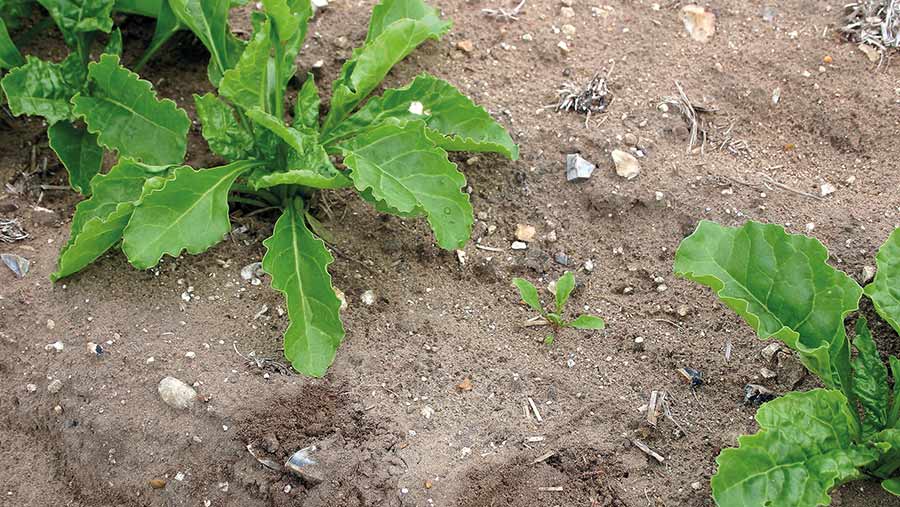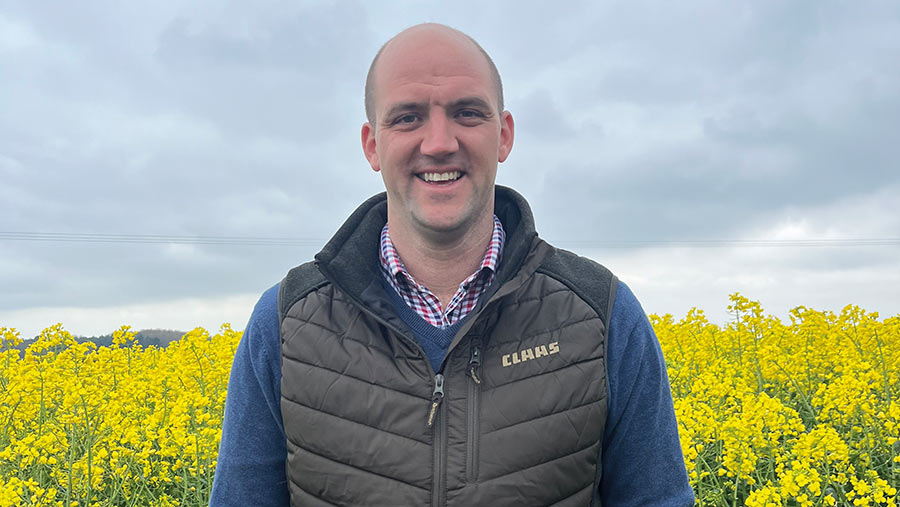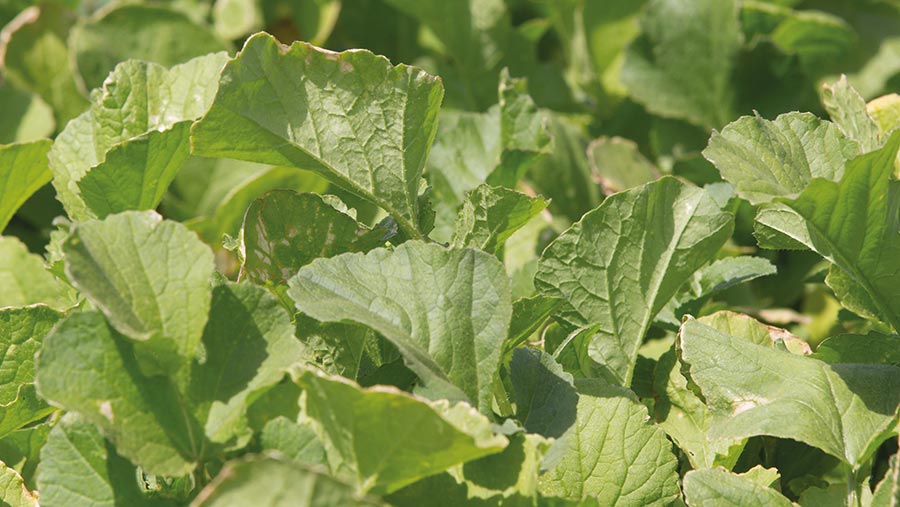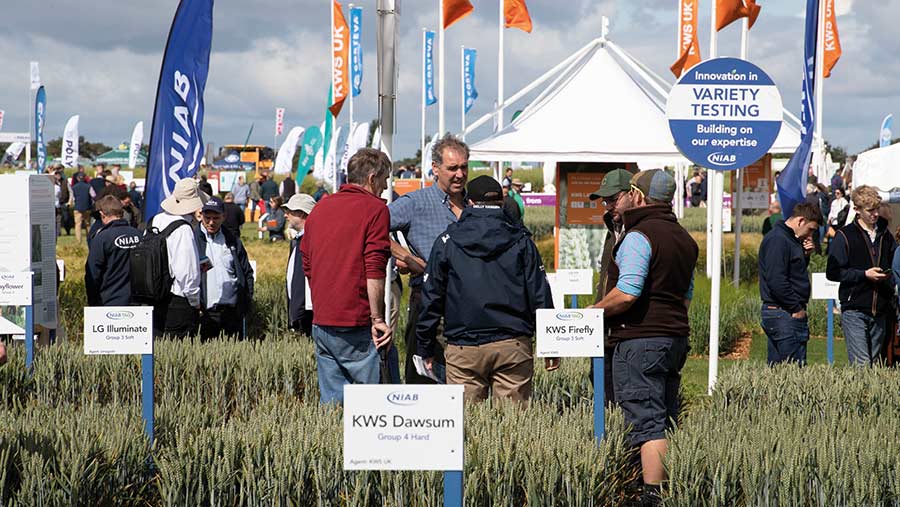Why cover crops have to work hard for Cereals event host farm
 Sugar beet affected by nematodes © Blackthorn Arable
Sugar beet affected by nematodes © Blackthorn Arable While farm manager Will Baker is a fan of cover cropping, he believes they have to work hard earning their place in the rotation at the Nottinghamshire estate.
They have three key jobs – manage soil pests, feed sheep and improve soil health.
See Also: How new tech aims to improve soil carbon measurement
Nestled in the heart of Sherwood Forest, Thoresby Estate has a diverse cropping mix on two different types of soil – sandland which is ideal for vegetable growing along with heavier Keuper marl.

© Will Baker
The light land stretching north-east of Nottingham is a well-known carrot growing area and the estate has spent the past 20 years investing in irrigation.
It has a pressurised water network with 22 reels applying up to 1.3m tonnes of water a year.
However, the long-term sustainability of veg and sugar beet growing could be threatened by a key pest that is generally most numerous in sandy and other light, open-textured soils.
Free-living nematodes can prove costly – they feed on the roots of carrots, parsnips and sugar beet resulting in the formation of multiple tap roots (fanging). In potatoes, they are vectors of tobacco rattle virus (TRV) which causes spraing.
Reasons for cover cropping
Will is in the third year of growing a specific oil radish recognised as a non-chemical method of managing the soil pest.
The Dutch-bred radish produces root exudates that stimulate hatching of the nematodes, but nutrients required for their reproduction are lacking and they simply die off.
“They are unable to complete their lifecycle,” he says.
Research shows this approach can reduce populations of free-living nematodes such as root knot, stubby root and root lesion types.
Trials carried out by Mr Baker at Thoresby showed that it successfully reduced numbers in fields seeing rising populations of the pest.
Sheep feed
Another reason for growing cover crops is to supplement forage stocks for the estate’s 1,000 ewes.
He explains that the Estate’s grassland area is being increasingly used to host events, generating income for the estate.
This is putting pressure on grazing and the Defender radish is a valuable autumn feed for sheep. “Sheep did well on it.”
Finally, the cover crops are improving soil health with their rooting and organic crop residue, providing green cover over the winter.
He already sees the value of having roots to hold onto soil with the carrots.
“You have to grow carrots with barley sown between rows, otherwise it would blow.”

Oil radish © Tim Scrivener
Rotation and species
The cover crop fits in the rotation after winter barley and before a spring crop.
“We grow as much as we can, which depending on the rotation is 70-150ha a year.”
He has tried many mixes ranging from volunteer cereals through to pricier, multispecies mixes. However, he has seen the best results with the Defender radish.
“You want a fibrous root mass that helps break the pest’s lifecycle.”
One learning point is to drill at a higher rate of 20kg/ha, as he looks for the root mass to help break the lifecycle. The radish helps with potato cyst nematode too.
However, he points out that cover crops are an extra cost. So they have to pay their way, by having multiple roles.
He adds that they were seeing a yield reduction with spring barley on the heavier land, so avoids growing a cover crop before the spring cereal on the Keuper marl.
Maize addition
Another fairly recent addition to the rotation is 240ha of maize, which is grown for anaerobic digestion.
This has helped the estate to diversify its cropping and tap into the bioenergy sector, with two anaerobic digesters within seven miles.
A small area is also grown as forage for a local dairy farmer.
“The crop fits nicely after sugar beet. We are lifting about 20,000t a year and don’t start until before Christmas. Therefore, winter wheat establishment is not really an option.”
So instead, Will plants maize in May, leaving plenty of time to cultivate after beet lifting.
Growing maize also enables slurry applications. This is important as sandland is hungry, so the estate adds organic matter and digestate.
Maize is harvested mid-October and growing it on the lighter land means Will can opt for later-maturing varieties to maximise yield, typically 45-50t/ha. “It travels OK in the autumn.”
The estate has now got its own maize drill and looking to fit it to a toolbar and reduce soil disturbance.
“You can lose moisture in May when drilling and this [the drill] is valuable for a good establishment.”
After maize is spring barley, then veg or a hybrid winter barley seed crop for Syngenta.
“We are quite unique in having a two-year cereal break in the rotation before the hybrid barley seed crop, so are able to grow this premium crop,” says Will.
Its earlier harvest than wheat also proves valuable, being cut in the third week of July before the OSR – and barley does better on sand than wheat.
Autumn is the busiest time for veg, so this cropping mix helps spread the workload.
Farm facts
- 2,200ha – half heavy land and half light bunter sands
- Heavy land is mainly contract farmer or rented. Light land is mainly home
- Reliance on irrigation for light land, especially as 625mm a year rainfall.
- Use neutron probes to monitor soil moisture and have a 1,000ha irrigated area
- About 1.3m tonnes of water irrigated using 22 irrigation reels and rain guns.
- Establishment system:
- Heavy land: Väderstad Top Down cultivator and Väderstad Rapid drill
- Light Land: The Horsch Sprinter is used for sand, as the Rapid can do too much on sand. Also have a Väderstad Carrier
- Rotation:
- On Keuper Marl soils: Double cereal (winter wheat, spring barley), oilseed rape, double cereal then winter beans. Having a legume is valuable, as running OSR one year in three is too close, so alternate with beans.
- On the Bunter sandstone, winter wheat, hybrid barley seed crop, potatoes, maize, onions, carrots and sugar beet. Hybrid barley seed crop follows two-year non-cereals beet/maize, maize/veg or beet/veg.
Cereals 2023

© Tim Scrivener
Visitors to this year’s Cereals event will be able to see cover crop plots and get advice from experts and seed merchants.
Advice will be on hand for establishing cover crops, tips on which species to grow, and the timing of their destruction before drilling.
This year’s Cereals will also include energy and biomass demonstrations and seminars enabling farmers to create a more sustainable and cost-effective farm energy plan.
The event is being held on Tuesday 13 and Wednesday 14 June at Thoresby Estate in Nottinghamshire. For more details and to book tickets, go to www.cerealsevent.co.uk

